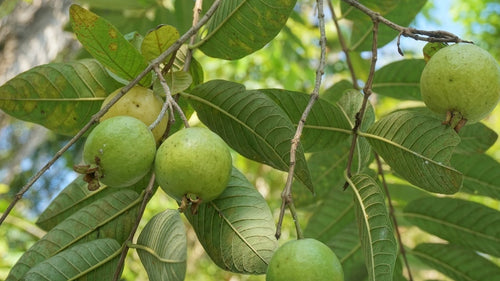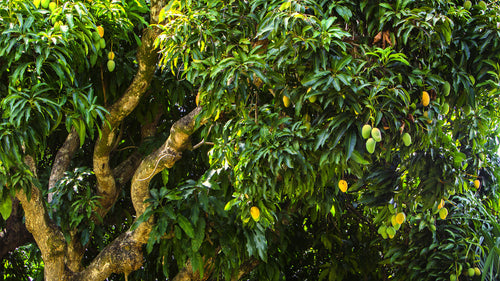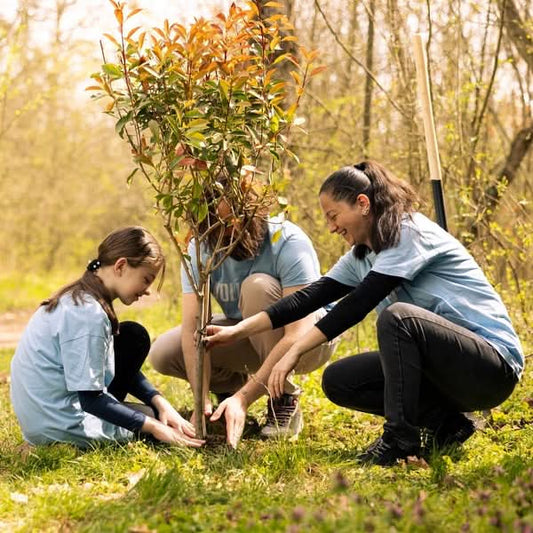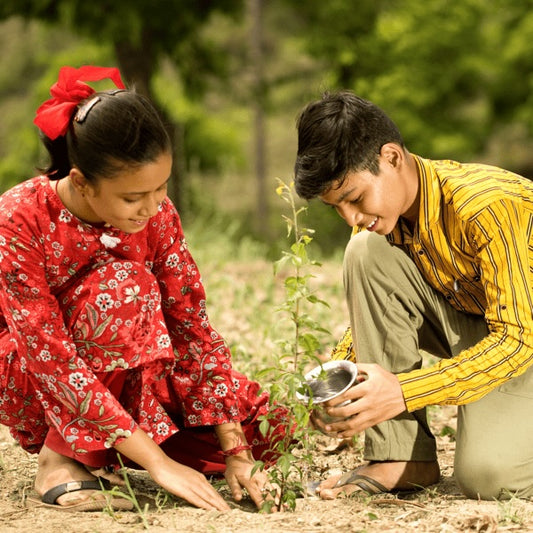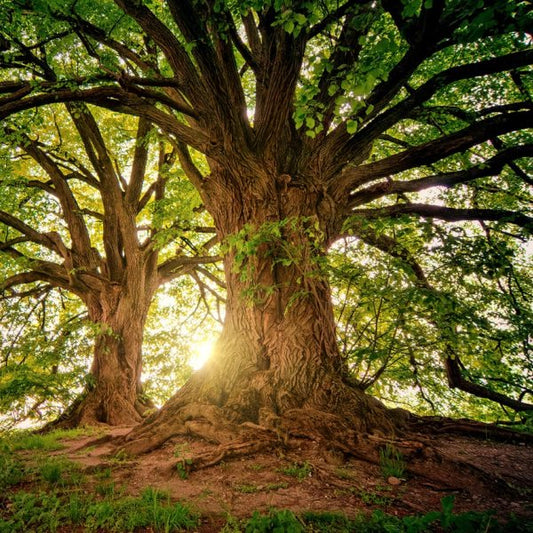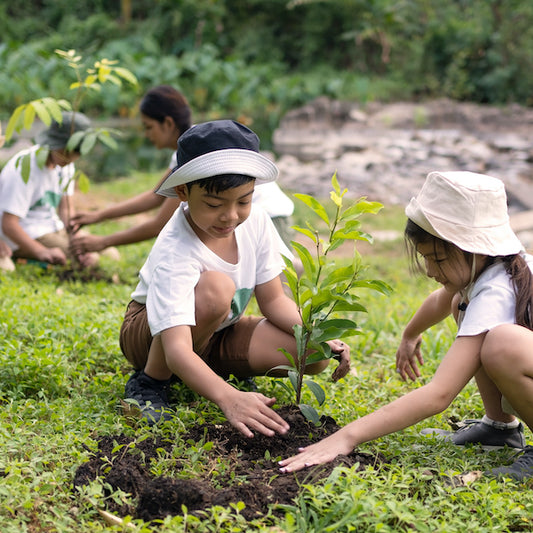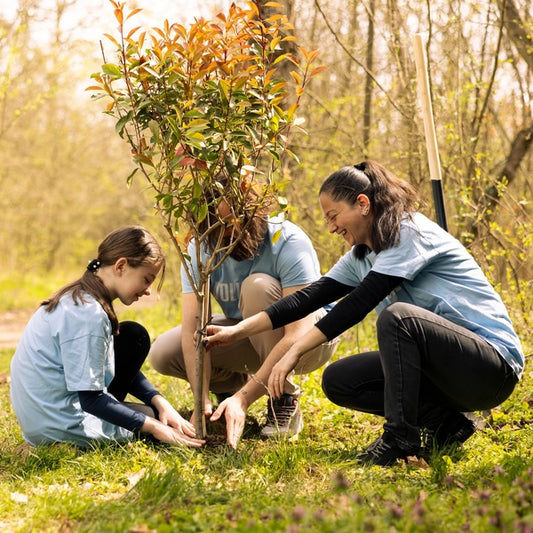Silox India Agroforestry Initiative: Cultivating Sustainability and Biodiversity
Silox India has embraced agroforestry as a key approach to promoting environmental sustainability and supporting local communities. By integrating tre Read more
Project Update 4
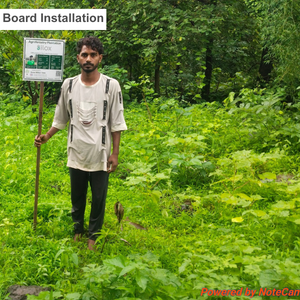
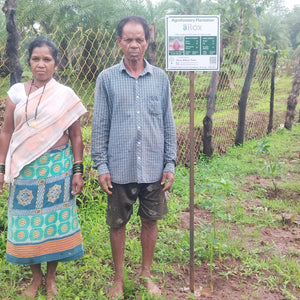

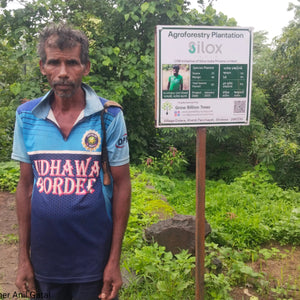
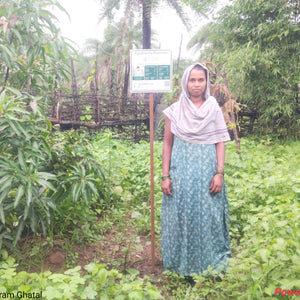
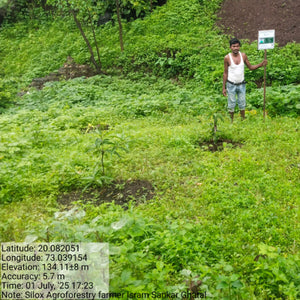
Project Update 3







Project Update 2



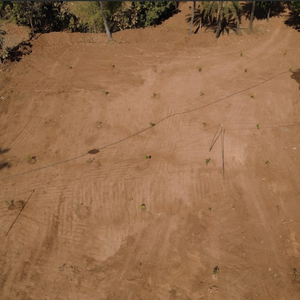




Project Update 1


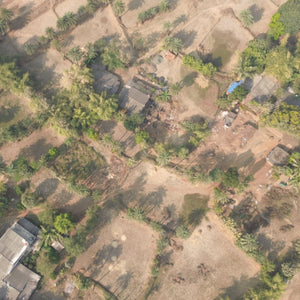


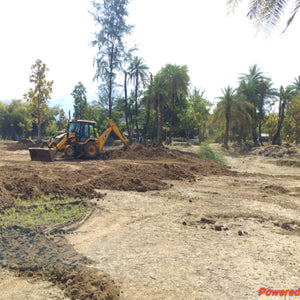

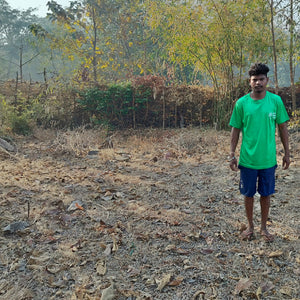
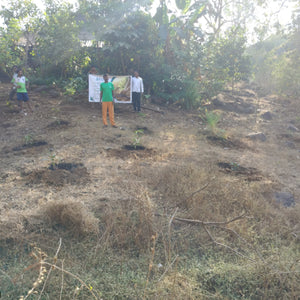
Digital Forest
Forest with 1,050 Trees planned
Want to plant your tree now?
Plant a Tree @ 299Trees Planted
Silox India Agroforestry Initiative: Cultivating Sustainability and Biodiversity
Silox India has embraced agroforestry as a key approach to promoting environmental sustainability and supporting local communities. By integrating trees into agricultural landscapes, the company aims to enhance soil health, boost biodiversity, and provide farmers with sustainable income opportunities. This initiative contributes to ecological balance, improves water retention, and fosters resilience against climate change. The strategic plantation of fruit-bearing trees like mango and guava not only adds green cover but also offers long-term financial returns to farmers. By encouraging community ownership and land stewardship, Silox India empowers farmers to become active participants in climate-smart agriculture. Through its agroforestry projects, Silox India is paving the way for a greener, more sustainable future while uplifting rural communities.
Project Planning & Execution
No of Trees: 1050 Trees
Plantation Location: Dulara Village, Silvassa, Daman And Diu - 396230
Plantation Duration: January 20th, 2025 to January 30th, 2025
Name of Species: Guava, Mango (Kesar)
Species Selection & Its Benefits:
Species selection plays a critical role in the success of agroforestry systems, as it directly impacts productivity, sustainability, and environmental benefits. It involves choosing plant species that are well-suited to the local climate, soil, and ecosystem, ensuring that they can thrive and complement one another. In addition to the environmental benefits, the chosen species are aligned with local market demand, ensuring that they offer viable income opportunities for farmers.
Farmer consent is a key part of the selection process, with their involvement ensuring the species chosen also complement their existing agricultural practices and preferences. By carefully balancing native species with market availability, such as fruit-bearing trees, the project supports both the economic stability of farmers and the ecological sustainability of the region.
Mango (Kesar) and Guava are excellent choices for agroforestry due to their economic, ecological, and social benefits. Mango (Kesar), a high-value cash crop, enhances farmer income while improving soil health and carbon sequestration. Its deep-rooted structure minimizes competition with other crops, making it ideal for mixed farming. Guava, a hardy and fast-growing fruit tree, provides quick economic returns and supports biodiversity by attracting pollinators. It also enriches soil fertility and ensures food security with its high nutritional value. Both species contribute to sustainable land use, environmental conservation, and rural livelihoods.
Beneficiaries Details
To ensure the success and sustainability of the agroforestry project, farmer selection and engagement played a crucial role. Below are the details related to farmers involved in the Dolara Village, Silvassa (Daman and Diu) project:
-
Target Population: The initiative primarily targets marginal farmers with low land holdings, typically ranging from 1 to 3 acres, who are fully dependent on farming for their livelihoods.
-
Age Group: aged 25-60
-
Gender: Inclusive of all genders
-
Social & Economic Status: Small to medium-scale farmers from lower-middle-income groups.
-
Beneficiaries (Farmer) Count: A total of 13 farmers participated in this agroforestry initiative.
-
Selection Procedure: Farmers were selected through a thorough and engaging process to ensure their active participation and commitment to the agroforestry initiative. The GBT team conducted door-to-door visits, personally interacting with farmers to understand their challenges and convince them of the benefits of agroforestry.
Through detailed discussions and awareness sessions, farmers were introduced to the concept of agroforestry and its long-term advantages. They were shown how integrating trees with crops could improve soil health, enhance water retention, and significantly boost their income by 2-3 times.
The selection also considered factors such as the suitability of their land for agroforestry and their alignment with the project’s goals. Site assessments and coordination with local authorities ensured the participation of dedicated farmers who were ready to embrace sustainable practices.
-
Consent Signing: To formalize their commitment to the project, each selected farmer signed a consent form agreeing to the terms and conditions of participation. This included their willingness to adopt agroforestry practices, the maintenance of planted trees, and their involvement in monitoring and reporting progress throughout the project. The consent ensured transparency and mutual understanding between the farmers and the project team.
-
Farmer Support: Participating farmers received technical training on tree planting, maintenance techniques, and sustainable agroforestry practices from an expert in the field. The expert will conduct site visits of the project to ensure all necessary measures are in place for successful implementation and to guarantee the future impact and healthy survival of the trees.
Regular meetings were conducted with farmers to foster a sense of ownership and ensure they were actively involved in every stage of the project. This collaborative approach ensures that the agroforestry system is effectively managed and sustained in the long run.
Planting Methodology and Its Advantages
Agroforestry:
Agroforestry is a sustainable land management practice that combines the cultivation of trees, crops, and livestock on the same land to create mutually beneficial ecosystems. This approach improves soil fertility through natural nutrient cycling, reduces erosion, and enhances water retention, leading to healthier and more productive land. Agroforestry also contributes to biodiversity conservation by providing habitats for various species and acts as a carbon sink, mitigating the effects of climate change. Additionally, it offers economic benefits by diversifying income sources for farmers and promoting long-term environmental stability, making it a vital tool for sustainable development.
Advantages of Agroforestry
-
Increased Farmer Incomes: Agroforestry helps farmers earn more by diversifying income sources through fruits and fodder, increasing their earnings by up to three times.
-
Poverty Alleviation: This approach boosts farm productivity and income, directly contributing to SDG 1 (No Poverty).
-
Improved Soil Fertility: Agroforestry enhances soil health by recycling nutrients and adding organic matter.
-
Erosion Control: It prevents soil degradation by stabilizing the land with deep-rooted trees.
-
Water Conservation: Agroforestry promotes water retention and reduces surface runoff, ensuring sustainable water use.
-
Climate Mitigation: By acting as a carbon sink, agroforestry helps reduce greenhouse gas emissions.
-
Biodiversity Conservation: It supports ecological balance by providing habitats for various species.
-
Sustainable Land Use: Agroforestry integrates trees with crops or livestock, ensuring long-term agricultural productivity.
-
Microclimate Regulation: This practice moderates temperatures and increases humidity, improving local climate conditions.
-
Climate Resilience: Agroforestry strengthens ecosystems, making them more resilient to droughts, floods, and climate challenges.
Conclusion Elements
Impact
Direct Impact
| Parameters | Values | References |
| No. of Trees Planted | 1,050 | |
| Green Cover (Acres) | 7 acres | |
| No of Farmers impacted | 13 | |
| Fruit Production Potential (Tons/Year) | 69.3 | Please Refer Appendix |
| Income Generation Potential (Rs/Year) | ₹1,814,400 | Please Refer Appendix |
| Carbon Sequestration Potential (KG) | 20 |
Small to medium-sized trees can sequester around 10–48 kilograms (22–106 pounds) of CO₂ annually. https://growbilliontrees.com/blogs/knowledge/how-much-co2-can-one-tree-absorb |
| Carbon Sequestration by 1000 mature trees ( Tons/year) | 21 Tons | No. of Trees x Carbon Sequestration by 1 mature trees per year |
| Carbon Credit Equivalent | 21 | One carbon credit is equivalent to one tonne of carbon dioxide or the equivalent amount of another greenhouse gas. |
| Carbon Footprint of an avg Indian Citizen (Tons/Year) | 1.8 | https://www.iea.org/countries/india/emissions |
| Offsets Annual Carbon Footprint of (Adults) | 12 | Carbon offset by 1000 mature trees per year / Carbon Footprint of an avg Indian Citizen per year |
* This impact analysis is forward-looking (An Agro-forestry project matures in 3-5 years)
Fruit Tree Plantation: Farmer Details and Income Generation
Total income after 20 years: ₹36,288,000
Total income Per Year: ₹1,814,400
|
Sr No |
Farmer Name |
Google Map |
Village |
Area |
Guava |
Mango |
Total Trees |
Income from fruit trees (annually) after 2-3 years |
Total income after 20 years |
Total Income / year |
|
1 |
Anil ghatal |
Dolara |
0.5 acre |
25 |
40 |
65 |
₹105,000 |
₹1,890,000 |
₹94,500 |
|
|
2 |
Shanker ghatal |
Dolara |
0.5 acre |
25 |
40 |
65 |
₹105,000 |
₹1,890,000 |
₹94,500 |
|
|
3 |
Santiya Ghatal |
Dolara |
0.5 acre |
40 |
30 |
70 |
₹91,500 |
₹1,647,000 |
₹82,350 |
|
|
4 |
Sitaram |
Dolara |
0.5 acre |
15 |
25 |
40 |
₹65,250 |
₹1,174,500 |
₹58,725 |
|
|
5 |
Sukhad Ghatal |
Dolara |
0.5 acre |
10 |
25 |
35 |
₹62,250 |
₹1,120,500 |
₹56,025 |
|
|
6 |
Ishram ghatal |
Dolara |
0.5 acre |
25 |
50 |
75 |
₹127,500 |
₹2,295,000 |
₹114,750 |
|
|
7 |
Rajesh bharkud |
Dolara |
0.5 acre |
15 |
40 |
55 |
₹99,000 |
₹1,782,000 |
₹89,100 |
|
|
8 |
Jitesh ghatal |
Dolara |
0.5 acre |
20 |
65 |
85 |
₹158,250 |
₹2,848,500 |
₹142,425 |
|
|
9 |
Chetiya ghatal |
Dolara |
0.5 acre |
5 |
40 |
45 |
₹93,000 |
₹1,674,000 |
₹83,700 |
|
|
10 |
Laxman lahanu Ghatal |
Dolara |
0.5 acre |
5 |
40 |
45 |
₹93,000 |
₹1,674,000 |
₹83,700 |
|
|
11 |
Pradeep Ghodi |
Dolara |
0.5 acre |
10 |
70 |
80 |
₹163,500 |
₹2,943,000 |
₹147,150 |
|
|
12 |
Vishram Radiya |
Dolara |
1 acre |
5 |
345 |
350 |
₹779,250 |
₹14,026,500 |
₹701,325 |
|
|
13 |
Ranjeet Farle |
Dolara |
0.5 acre |
10 |
30 |
40 |
₹73,500 |
₹1,323,000 |
₹66,150 |
|
|
210 |
840 |
1050 |
₹2,016,000 |
₹36,288,000 |
₹1,814,400 |
* This Annual Production and Income Estimates are based on Year 2024-2025 Market analysis
Fruit Production Potential
|
SN |
Plant Name |
Annual Production per tree (in Kgs) |
No. of Trees Planted |
Total Yield (in Tons) |
|
1 |
Mango |
75 |
840 |
63 |
|
2 |
Guava |
30 |
210 |
6.3 |
|
Total |
69.3 |
Indirect Impact
Community Impact
-
Renewed Sense of Hope: Agroforestry brings long-term economic and environmental benefits, instilling optimism among farmers and communities. The promise of sustainable income, improved soil fertility, and enhanced biodiversity encourages local participation and long-term commitment to conservation efforts.
-
Strengthened Community Bonds: Collective efforts in tree planting, maintenance, and resource-sharing foster collaboration among farmers and villagers. Agroforestry projects create a sense of shared responsibility, strengthening social ties and promoting a culture of cooperation and sustainability.
-
Legacy of Environmental Stewardship: By integrating trees into farming systems, communities contribute to carbon sequestration, climate resilience, and biodiversity conservation. Agroforestry serves as a long-term investment in restoring degraded lands, leaving behind a greener and more sustainable environment for future generations.
-
Economic Upliftment: The cultivation of high-value crops like Mango and Guava enhances income security. Farmers gain access to market linkages and diversified revenue streams, ensuring financial resilience.
-
Knowledge Sharing and Skill Development: Training initiatives provide technical know-how in agroforestry practices, organic farming, and climate-adaptive agriculture, empowering communities with sustainable farming techniques.
Environmental Impact
-
Enhanced Biodiversity: Agroforestry promotes a rich ecosystem by supporting diverse plant and animal species. Trees like Mango and Guava provide habitat, food, and shelter for birds, pollinators, and beneficial insects, fostering ecological balance.
-
Soil Conservation & Fertility Improvement: The integration of trees with crops helps prevent soil erosion, improve organic matter, and enhance nutrient cycling. Deep-rooted species stabilize the soil, reducing degradation and increasing productivity.
-
Carbon Sequestration & Climate Resilience: Agroforestry absorbs atmospheric carbon dioxide, reducing greenhouse gas emissions and mitigating climate change. The tree canopy also regulates temperature, prevents drought stress, and enhances microclimate stability, making ecosystems more resilient.
-
Water Management & Conservation: Trees in agroforestry systems increase groundwater recharge, improve soil moisture retention, and reduce surface runoff. This leads to better water availability for crops
-
Air Quality Improvement: Trees filter pollutants, absorb carbon emissions, and release oxygen, improving air quality and creating a healthier environment for surrounding communities.
-
Long-Term Ecological Restoration: Agroforestry helps restore degraded lands, combat deforestation, and regenerate natural ecosystems, ensuring a sustainable future for both the environment and the communities that depend on it.
Achievements
SDG Goals Achieved through Agroforestry
-
SDG 1 (No Poverty): With the support of Silox India, agroforestry initiatives have helped increase farmer incomes by diversifying revenue sources through fruit production, reducing economic vulnerability in rural communities.
-
SDG 2 (Zero Hunger): The plantation of nutritious fruit-bearing trees like Mango and Guava, supported by Silox India, enhances food security and provides a sustainable source of nutrients and dietary diversity for local communities.
-
SDG 3 (Good Health and Well-being): Agroforestry projects funded by Silox India contribute to clean air, improved water retention, and access to organic fruits, promoting better nutrition and environmental health for communities.
-
SDG 5 (Gender Equality): With a strong focus on inclusive community participation, Silox India’s initiative empowers women by involving them in nursery management, harvesting, and agro-processing, fostering financial independence and skill development.
-
SDG 6 (Clean Water and Sanitation): Trees planted under Silox India’s agroforestry project help enhance groundwater recharge, prevent soil erosion, and improve water retention, leading to better water conservation and management in the region.
-
SDG 8 (Decent Work and Economic Growth): The initiative by Silox India has created employment opportunities in planting, maintenance, harvesting, and processing activities, providing sustainable rural livelihoods and entrepreneurship prospects.
-
SDG 9 (Industry, Innovation, and Infrastructure): Silox India’s commitment to sustainability supports innovative agroforestry techniques, improved farming infrastructure, and eco-friendly processing units, fostering rural development and green technology integration.
-
SDG 10 (Reduced Inequalities): The project ensures inclusive participation of marginalized farmers, small-scale growers, and women, providing them with equal opportunities for financial growth, skill-building, and access to resources, thus reducing socio-economic disparities.
-
SDG 11 (Sustainable Cities and Communities): By increasing green cover, reducing air pollution, and enhancing urban resilience, Silox India’s initiative contributes to greener, more sustainable rural and urban landscapes, creating healthier living environments.
-
SDG 12 (Responsible Consumption and Production): By promoting organic farming, reduced chemical dependency, and sustainable land use, Silox India’s agroforestry efforts encourage eco-friendly agricultural practices that minimize environmental degradation.
-
SDG 13 (Climate Action): Through its commitment to sustainable environmental practices, Silox India has contributed to carbon sequestration, climate resilience, and the mitigation of climate change impacts, ensuring a healthier planet.
-
SDG 15 (Life on Land): Silox India’s plantation efforts play a crucial role in restoring degraded lands, conserving biodiversity, and supporting wildlife habitats, helping to sustain forest and agricultural ecosystems for future generations.
-
SDG 17 (Partnerships for the Goals): Through a strategic alliance with Grow Billion Trees, Silox India has successfully integrated agroforestry within agricultural landscapes, fostering sustainable land use practices that benefit both local communities and the environment. Grow Billion Trees played a pivotal role in connecting Silox India with local farmers, equipping them with the necessary resources, knowledge, and technical support to implement agroforestry effectively. This multi-stakeholder collaboration has strengthened partnerships between the private sector, local communities, and environmental organizations, ensuring long-term sustainability. By empowering farmers to adopt eco-friendly practices, this initiative has enhanced their economic resilience, while advancing global sustainability goals and reinforcing the power of collective action.
By aligning its efforts with multiple SDGs, Silox India has not only fostered environmental sustainability but also contributed to economic empowerment and community well-being, leaving a lasting impact on the ecosystem and livelihoods of the people involved.
ESG Achieved through Agroforestry:
Silox India’s agroforestry initiative is deeply aligned with Environmental, Social, and Governance (ESG) principles, ensuring a sustainable and responsible approach to tree plantation.
-
Environmental Impact: SILOX India’s agroforestry project enhances carbon sequestration, mitigates climate change, and improves air quality by absorbing pollutants and releasing oxygen. The plantation of native fruit-bearing species such as Mango and Guava, supports biodiversity, provides shelter for wildlife, and prevents soil erosion while improving water retention and groundwater recharge, promoting sustainable land use.
- Social Impact: This initiative has directly benefited local farmers by offering an additional source of income through fruit harvesting and agroforestry-based livelihoods. It has also empowered rural communities, especially women and youth, by providing employment opportunities and skill development programs. Improved food security and nutrition from fruit-bearing trees further contribute to the well-being of the local population.
- Governance Impact: Silox India’s collaboration with Grow Billion Trees, local farmers, and environmental organizations reflects its commitment to ethical and sustainable practices. This project fosters transparency, accountability, and long-term stakeholder engagement, reinforcing the company’s role as a responsible corporate citizen. Through strategic partnerships and sustainable agroforestry models, Silox India is making a lasting impact on both the environment and communities, setting a benchmark for corporate sustainability.
Building Communities
-
Economic Empowerment & Livelihood Generation: Silox India’s agroforestry initiative has created sustainable income opportunities for farmers through fruit harvesting and agro-based enterprises. By introducing trees like Mango and Guava, farmers now benefit from diversified revenue sources, enhancing their financial stability and promoting sustainable land-use practices.
-
Community Engagement & Social Cohesion: The project has strengthened community ties by involving farmers, youth, and local organizations in collaborative efforts. Through training and shared activities, it has fostered collective decision-making and long-term commitment to environmental conservation, ensuring the success of the initiative.
-
Sustainable Green Spaces & Well-Being: The project has also contributed to the creation of green spaces that improve air quality, reduce heat, and provide shaded areas. These spaces enhance the livability of the community, fostering better physical and mental well-being while strengthening social bonds.
-
Fostering Partnerships: Silox India’s agroforestry initiative thrives on the power of strategic partnerships that bring together local farmers, environmental organizations, and private sector collaborators. By working closely with Grow Billion Trees, Silox India has facilitated knowledge-sharing, technical support, and the implementation of sustainable practices in farming communities. These partnerships have not only empowered farmers to adopt agroforestry practices but have also strengthened local networks, fostering long-term sustainability.
Through collaborations with local communities, Silox India has ensured that the project aligns with regional development goals, creating a sense of ownership and shared responsibility. This approach has also improved resource access, allowing farmers to benefit from financial support, training, and market linkages, further enhancing the impact of the agroforestry project.
Commitment by Grow Billion Trees
-
Long-Term Monitoring & Maintenance: Grow Billion Trees prioritizes the long-term health and growth of the plantation by employing regular monitoring, maintenance, and proactive pest control. The success of a plantation project depends on post-plantation care. GBT has established a monitoring framework that includes geo-fencing of trees, periodic health assessments, and maintenance strategies to ensure the long-term survival and growth of the forest.
-
Transparency and Accountability: Grow Billion Trees commits to maintaining transparency through regular reporting, progress updates, and geo-fencing technology to track plantation locations, growth, and alignment with SDG and ESG goals.
-
Commitment to Environmental Restoration: Grow Billion Trees (GBT) is dedicated to restoring degraded ecosystems by planting trees in areas where they can have the most positive impact on biodiversity and climate change. Through large-scale afforestation projects, GBT aims to combat deforestation, improve air quality, and support long-term sustainability.
-
Promoting Biodiversity Conservation: GBT is focused on promoting biodiversity by planting native and resilient species, ensuring the restoration of diverse ecosystems. Their commitment to biodiversity aims to protect endangered species, restore habitats, and maintain the ecological balance needed for a thriving environment.
-
Resource Optimization: Grow Billion Trees ensures the optimal use of resources, including water, compost, and materials, through careful planning and partnerships with local suppliers. Resource efficiency is monitored to prevent waste and maximize project impact.
-
Collaboration for Sustainability: GBT values partnerships and works collaboratively with organizations, companies, and local governments to implement large-scale tree planting projects. By building strategic alliances, GBT strengthens its efforts to create lasting environmental, social, and economic impacts that support sustainable development goals (SDGs).
-
Fostering Community Engagement: Grow Billion Trees understands that successful environmental initiatives require the active involvement of local communities. They prioritize community engagement by creating educational opportunities, encouraging local participation, and fostering a shared sense of environmental responsibility among residents, students, and volunteers.
-
Educational Opportunities for Children: GBT recognizes the importance of educating future generations about the environment. Through schools, workshops, and community programs, they aim to spread environmental awareness, teach sustainable practices, and empower individuals to take proactive steps in protecting the environment.
-
Global Mission & Future Vision: Grow Billion Trees is dedicated to scaling up afforestation efforts worldwide, working with corporations, governments, and communities to create impact-driven, large-scale green initiatives. The collaboration with Silox India is a testament to GBT’s mission of planting trees, restoring ecosystems, and combating climate change for a greener future.
Acknowledgment
We at Grow Billion Trees extend our deepest gratitude to all those who have contributed to the success of the agroforestry project in Dolara, Silvassa (Daman And Diu). This transformative initiative, which has positively impacted both the landscape and the lives of many, would not have been possible without the support, collaboration, and dedication of various individuals and organizations.
To Silox India: We sincerely thank you for your unwavering commitment to environmental sustainability. Your vision for a more sustainable future has been the cornerstone of this initiative. By supporting this agroforestry project, you have not only contributed to the restoration of ecosystems but have also provided a platform for local communities to embrace sustainable farming practices. Your involvement has paved the way for a greener future, benefiting both the environment and the farming community of Dolara.
To the Farmers of Dolara, Silvassa: We are deeply inspired by your trust and dedication to the agroforestry model. By integrating this initiative into your fields, you have enriched your land, boosted your livelihoods, and set an example for sustainable farming practices. Your efforts are creating a ripple effect of positive change that will benefit not only your community but also future generations. It is an honor to work alongside you in fostering environmental and economic transformation.
To Our Ground Partners and Volunteers: We extend our heartfelt thanks to all the partners and volunteers whose dedication, expertise, and passion for the environment have been invaluable. Your contributions have made a lasting impact, and your collaboration has been essential in achieving the success of this project. Together, we’ve demonstrated that when we unite for a common cause, no challenge is too great, and no goal is too distant.
Together, we have made significant progress in promoting sustainable agriculture, restoring ecosystems, and improving livelihoods. This is just the beginning, and we look forward to continuing our partnership in building a greener, more sustainable world for all.
Thank you for your unwavering support and dedication.
Closing Remarks
The agroforestry initiative in Silvassa, involving the plantation of 1,050 fruit-bearing trees across 13 farmers' lands, stands as a model of sustainable land use and community empowerment. This project not only enhances local biodiversity and restores soil health but also creates long-term economic opportunities for the farmers through the cultivation of high-value trees like mango and guava. By transforming agricultural landscapes into resilient, multi-functional ecosystems, this initiative promotes both environmental well-being and financial stability. As these trees mature, they will yield not just fruits, but a lasting legacy of green livelihoods, climate resilience, and rural prosperity.
Trees for Corporates
Trending
Most Popular
Sustainable Reforestation
Planting trees isn’t just about making the world greener—it’s about keeping it green! Sustainable reforestation ensures that forests don’t just sprout up but actually thrive for generations. Silox India’s initiatives champion this cause, combining local engagement with native species selection. After all, a well-planned forest is like a well-planned party—everyone gets along, and the ecosystem stays balanced.
Carbon Sequestration
Trees are the original carbon vacuums. Through photosynthesis, they inhale carbon dioxide and lock it away in their roots and trunks. Agroforestry boosts this process, making farmland not just productive but also climate-friendly. So, next time you plant a tree, remember—you’re basically giving the planet an air purifier.
Native Species Plantation
Exotic trees might be Instagrammable, but native species are the real MVPs of reforestation. They support local wildlife, require less maintenance, and adapt seamlessly. Silox India’s tree plantation projects focus on these eco-warriors, ensuring forests aren’t just green but also genetically sustainable.
Farmer-Led Agroforestry
Why should farmers stick to just crops when trees can bring long-term profits? Agroforestry blends farming with tree cultivation, giving farmers extra income while enriching the soil. Think of it as a side hustle for the environment—fruit trees, timber, and climate resilience all in one package.
Soil Regeneration
Bad soil is like a bad relationship—it takes time to heal. Tree roots improve soil structure, prevent erosion, and increase microbial activity. By planting trees on degraded land, Silox India is basically giving the soil a much-needed therapy session.
Biodiversity Enhancement
A monoculture farm is like a one-genre playlist—boring and unsustainable. Agroforestry spices things up by adding diverse tree species, attracting birds, pollinators, and other wildlife. It’s nature’s way of saying, “The more, the merrier!”
Water Table Recharge
Droughts are a nightmare, but trees are nature’s rainmakers. Their roots slow down water runoff, allowing more to seep into the ground. Silox India’s green projects focus on restoring underground water reserves—because what’s a forest without a drink?
Urban Forestry
Trees in cities? Absolutely! Urban forestry helps fight pollution, cools down the concrete jungle, and makes urban spaces healthier. Whether it's a park, roadside plantation, or corporate green initiative, city trees work overtime to keep us all breathing easy.
FAQ
What are the benefits of tree plantation?
Tree plantation improves air quality, prevents soil erosion, conserves water, and provides habitat for wildlife. It also helps combat climate change by absorbing carbon dioxide. At Silox India, we prioritise planting native and fruit-bearing trees to enhance biodiversity, support local communities, and restore ecological balance.
How does agroforestry help farmers?
Agroforestry integrates trees with crops, offering multiple benefits like soil enrichment, better water retention, and increased biodiversity. Farmers gain additional income from fruit, timber, and medicinal plants. Silox India promotes agroforestry to boost farm productivity and sustainability, ensuring long-term ecological and economic gains.
What tree species are best for plantation in India?
Native species like Neem, Peepal, Jamun, Mango, and Bamboo are ideal for Indian climates. These trees support local biodiversity, require less maintenance, and provide ecological benefits. Silox India carefully selects tree species suited for specific regions to maximise environmental impact.
How does tree plantation help in carbon sequestration?
Trees act as natural carbon sinks, absorbing CO₂ and reducing greenhouse gases. Through photosynthesis, they store carbon in their roots, trunks, and soil. Silox India’s reforestation projects contribute to climate action by increasing green cover and reducing carbon footprints.
What is Silox India’s role in tree plantation and reforestation?
Silox India actively engages in large-scale tree plantation drives, promoting agroforestry and sustainable reforestation. We collaborate with communities, corporates, and environmental organisations to restore degraded lands, enhance biodiversity, and improve rural livelihoods.
How does tree plantation help water conservation?
Tree roots slow down rainwater runoff, allowing it to seep into the ground and replenish groundwater levels. Forested areas also prevent soil erosion and maintain local water cycles. Silox India focuses on afforestation projects that support water table recharge and sustainable agriculture.
What is the importance of native species in reforestation?
Native trees adapt better to local climates, require less water, and support regional biodiversity. They provide food and shelter for native wildlife and contribute to a balanced ecosystem. Silox India prioritises native species plantation to ensure long-term sustainability.
How can individuals and companies participate in tree plantation?
People can contribute by planting trees, supporting afforestation projects, or partnering with organisations like Silox India. Companies can integrate plantation drives into their CSR initiatives, creating long-term environmental and social impact.
How does tree plantation reduce human-wildlife conflict?
Reforestation creates natural habitats, reducing wildlife migration into human settlements. Trees provide food and shelter for animals, minimising conflicts. Silox India works on afforestation projects that restore wildlife corridors and promote ecological balance.
What are the long-term benefits of agroforestry?
Agroforestry improves soil health, increases farmer income, supports biodiversity, and enhances climate resilience. It creates sustainable land-use practices that benefit both people and the environment. Silox India promotes agroforestry as a key strategy for sustainable development.
- Choosing a selection results in a full page refresh.
- Opens in a new window.


